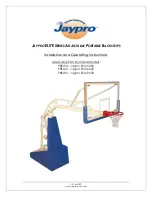
CUSTOM FITTING YOUR P
ACK
CUSTOM FITTING YOUR P
ACK
8
9
3. FRAME SHAPING
If you have answered “discomfort/pressure” see, the
“Frame Shaping” section on page 10.
When you are
walking with weight in the pack,
the pack’s
shape should be exactly the same as your back. We put an average
curve into the frame at the factory, but some additional fine-tuning
may be required.
feels great discomfort/
pressure
Area A- Lumbar Pad
(bottom of the belt)
Area B - Shoulder Pad
(top of back)
Area C - Headroom
top
mid
bottom
top
mid
bottom
D. Snug the load-lifter
straps (Figure 2H)
This
lifts the shoulder straps (and
the pack’s weight) off the
top of your shoulders. Don’t
allow the load-lifters to pull
the shoulder straps more
than 1/2" off your shoulder,
or it will cause pressure
points. If the pack feels bet-
ter the more you pull the
load lifter, the stays might
need to be adjusted.
E. OPTIONAL-
Position the sternum
strap (Figure 2I) on
your chest, and pull it
snug.
The sternum strap
should cross your chest high,
just below your clavicle, so it
doesn’t interfere with your
breathing. Some people find
it more comfortable not to
use the sternum strap when
breathing hard—especially
at altitude.
F. OPTIONAL-
Pull the belt stabilizers
just snug (Figure 2J).
If
overtightening them feels
good, you might need to
bend more curve into the
frame in the lumbar region.
Overtightening causes gaps
between you and the belt.
Belt stabilizers are best left
loose for the first 15-30 min-
utes of hiking.
Figure 2I
Figure 2J
Figure 2H
Figure 2K
Area C
Area B
Area A
G. When the waistbelt and
shoulder straps are in the
correct positions, walk
around and notice how
the pack feels against
your back.
The pack should
conform to your back as in
(Figure 2K)
. Use the short
evaluation below to ensure a
great fit. Take notice of any
pressure points and trouble
shoot them in the next section.

























